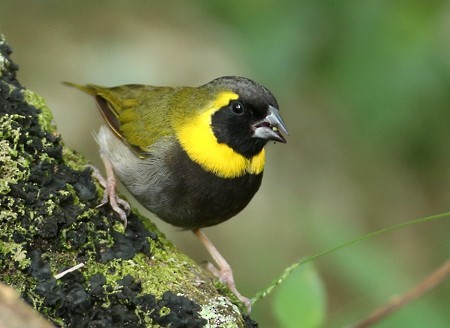Birdfinding.info ⇒ Thinly distributed and generally declining across most of Cuba, but still locally common in the western mountains. Most readily seen at the Las Terrazas feeding station in the Sierra del Rosario Biosphere Reserve. Also common at Soroa, Viñales, and La Güira National Park. On New Providence it is most often seen in downtown Nassau along Shirley Street.
Cuban Grassquit
Phonipara canora
Endemic to Cuba, where it occurs in brushy woodlands and scrub at all elevations. Trapping for the cagebird trade has depleted it from many areas, though small numbers remain essentially throughout the island. The bulk of the remaining population appears to be west of Havana in the mountains of Pinar del Río and Artemisa.
An introduced population has been established on New Providence in the Bahamas since the 1960s.
Identification
Male is unique: mostly olive above and gray below with a black face and chest and a contrasting, bright-yellow collar that frames the face.

Cuban Grassquit, male. (Quemada, Pinar del Río, Cuba; March 19, 2020.) © Jeffrey Offermann
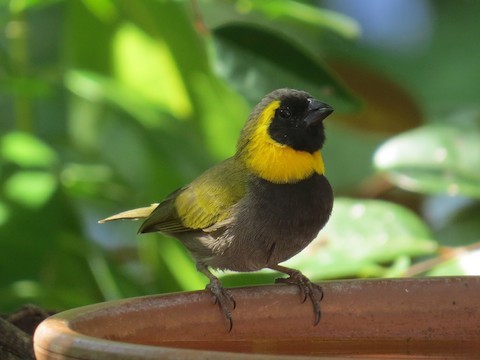
Cuban Grassquit, male. (New Providence, Bahamas; November 11, 2016.) © Carolyn Wardle
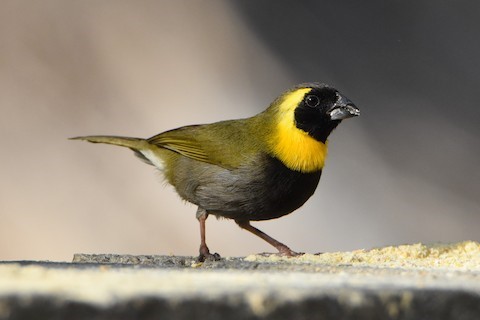
Cuban Grassquit, male. (Las Terrazas, Sierra del Rosario Biosphere Reserve, Artemisa, Cuba; March 7, 2020.) © Andrew Dobson
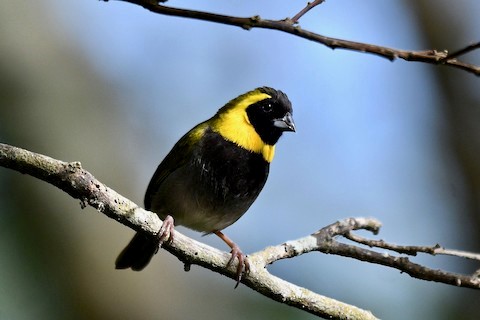
Cuban Grassquit, male in unusually dramatic lighting. (Cueva de los Portales, Pinar del Río, Cuba; January 3, 2019.) © Jacques Erard
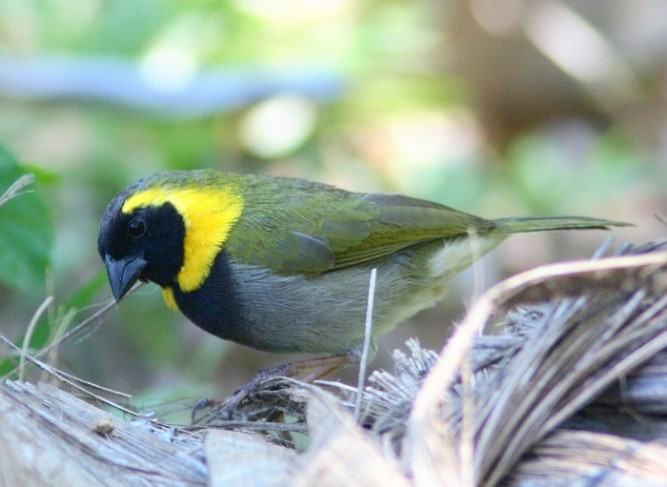
Cuban Grassquit, male. (Viñales, Pinar del Río, Cuba; March 29, 2008.) © William Price
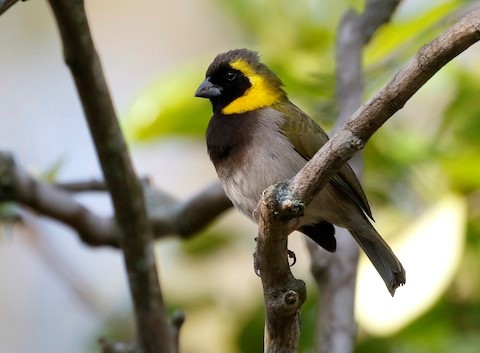
Cuban Grassquit, male. (Las Terrazas, Sierra del Rosario Biosphere Reserve, Artemisa, Cuba; March 1, 2019.) © Dave Curtis

Cuban Grassquit, male. (Las Terrazas, Sierra del Rosario Biosphere Reserve, Artemisa, Cuba; March 23, 2017.) © R. Dennis Ringer

Cuban Grassquit, male. (Las Terrazas, Sierra del Rosario Biosphere Reserve, Artemisa, Cuba; February 22, 2018.) © Arco Huang
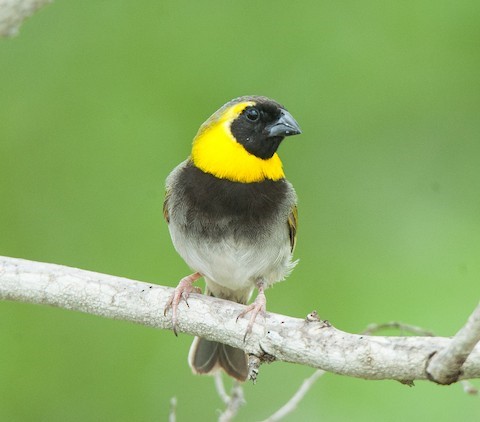
Cuban Grassquit, male. (Guantánamo Bay, Cuba; February 2, 2018.) © Wayne Fidler

Cuban Grassquit, male. (Hodones, Matanzas, Cuba; August 7, 2020.) © Tania Piñeiro

Cuban Grassquit, male with neck-ruff raised in display. (Cuba; March 31, 2008.) © William Price
When displaying, the male raises the yellow feathers to form a ruff.
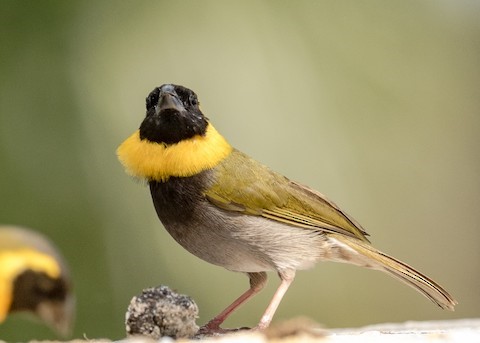
Cuban Grassquit, male with neck-ruff raised in display. (Las Terrazas, Sierra del Rosario Biosphere Reserve, Artemisa, Cuba; March 23, 2016.) © R. Dennis Ringer
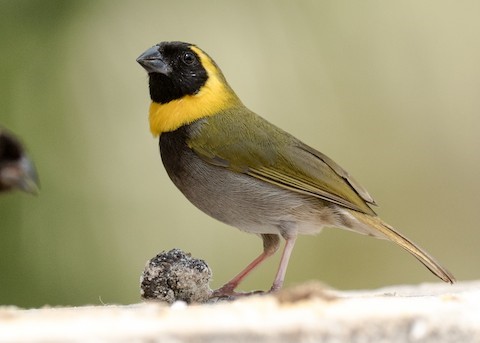
Cuban Grassquit, male. (Las Terrazas, Sierra del Rosario Biosphere Reserve, Artemisa, Cuba; March 23, 2017.) © R. Dennis Ringer
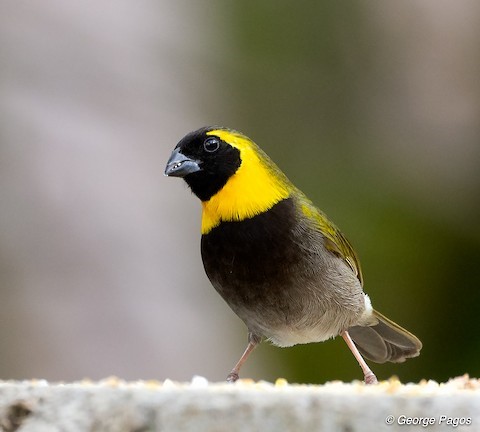
Cuban Grassquit, male. (Las Terrazas, Sierra del Rosario Biosphere Reserve, Artemisa, Cuba; February 14, 2019.) © George Pagos
Females are similar to males but duller and with distinctive facial coloration: rufous lores and throat and gray cheeks.
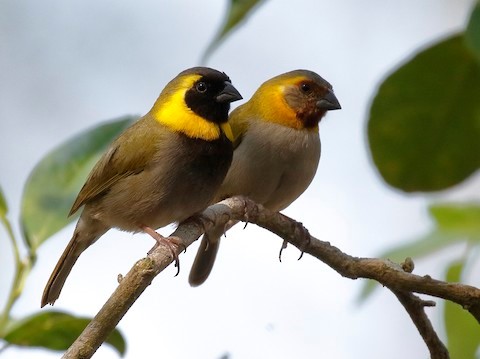
Cuban Grassquit, male and female. (Las Terrazas, Sierra del Rosario Biosphere Reserve, Artemisa, Cuba; March 1, 2019.) © Dave Curtis

Cuban Grassquit, female. (Las Terrazas, Sierra del Rosario Biosphere Reserve, Artemisa, Cuba; March 7, 2020.) © Andrew Dobson
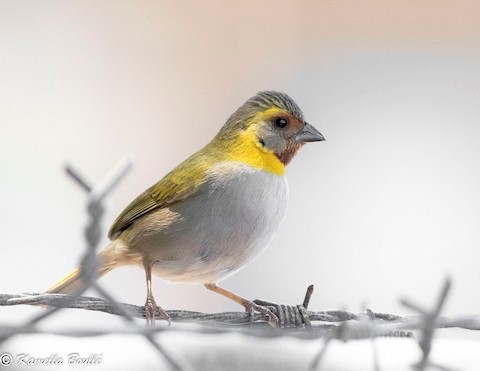
Cuban Grassquit, female. (New Providence, Bahamas; April 18, 2018.) © Kamella Boullé
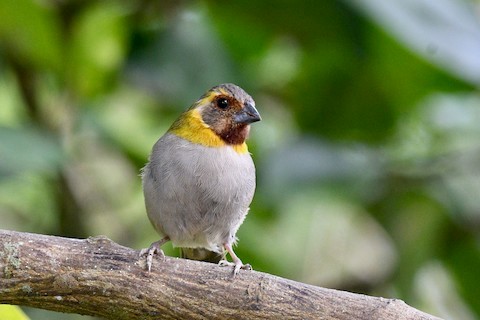
Cuban Grassquit, female. (Cueva de los Portales, Pinar del Río, Cuba; January 3, 2019.) © Jacques Erard

Cuban Grassquit, female. (Las Terrazas, Sierra del Rosario Biosphere Reserve, Artemisa, Cuba; March 1, 2019.) © Dave Curtis

Cuban Grassquit, female. (Península de Guanahacabibes National Park, Pinar del Río, Cuba; December 2, 2014.) © Hal and Kirsten Snyder
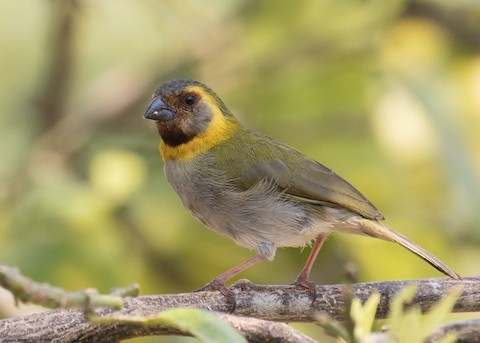
Cuban Grassquit, female. (Las Terrazas, Sierra del Rosario Biosphere Reserve, Artemisa, Cuba; March 23, 2017.) © R. Dennis Ringer

Cuban Grassquit, female. (New Providence, Bahamas; May 7, 2018.) © Erika Gates
Notes
Monotypic species.
References
BirdLife International. 2018. Phonipara canora. The IUCN Red List of Threatened Species 2018: e.T22723595A131889418. https://dx.doi.org/10.2305/IUCN.UK.2018-2.RLTS.T22723595A131889418.en. (Accessed March 19, 2021.)
eBird. 2021. eBird: An online database of bird distribution and abundance. Cornell Lab of Ornithology, Ithaca, N.Y. http://www.ebird.org. (Accessed March 19, 2021.)
Garrido, O.H, and A. Kirkconnell. 2000. Field Guide to the Birds of Cuba. Cornell University Press.
Kirwan, G.M., A. Levesque, M. Oberle, and C.J. Sharpe. 2019. Birds of the West Indies. Lynx Edicions, Barcelona.
Navarro, N. 2015. Field Guide to the Endemic Birds of Cuba. Ediciones Nuevos Mundos, St. Augustine, Florida.
Raffaele, H., J. Wiley, O. Garrido, A. Keith, and J. Raffaele. 1998. A Guide to the Birds of the West Indies. Princeton University Press, Princeton, N.J.
Xeno-Canto. 2021. Cuban Grassquit – Tiaris canorus. https://www.xeno-canto.org/species/Tiaris-canorus. (Accessed March 19, 2021.)
